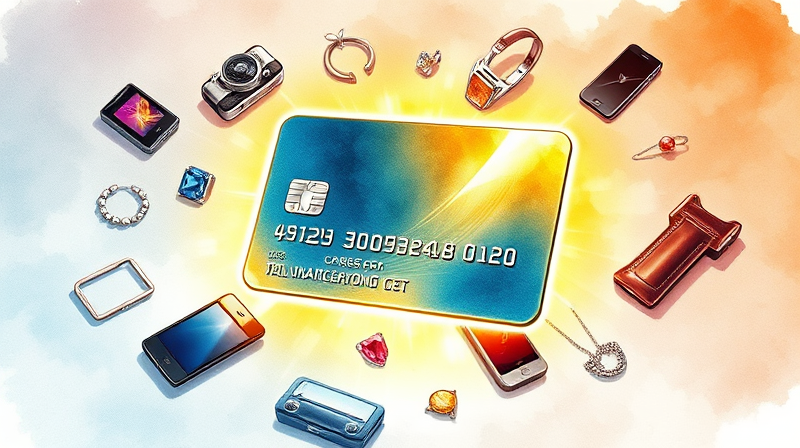
Every financial journey thrives on adaptability, especially in a world where expenses shift with the seasons and lifestyles evolve. Credit cards with rotating categories offer a unique way to align your rewards program with real-life needs and priorities.
Rather than settling for a flat-rate cash-back structure all year, you can ride high-value reward waves as they shift through grocery aisles, gas pumps, streaming services, and beyond. This approach gives you the freedom to optimize spending according to the moment, turning everyday purchases into powerful earning opportunities.
In this guide, we will dive deep into how rotating category cards work, reveal strategic insights from experts, and share inspiring real-life examples that prove flexibility breeds both savings and smarter financial behavior.
Rotating category cards are typically cash-back or rewards cards that deliver an elevated return—usually up to 5%—on defined spending categories that change every three months. Whether you shop for groceries in Q1, fill your tank in Q2, or stream your favorite shows in Q4, these cards adapt rewards to suit shifting lifestyles.
For instance, the Discover it Cash Back card famously matches all the cash back you earn in your first year, effectively doubling those quarterly windfalls. Meanwhile, the Chase Freedom Flex card mixes quarterly categories with a few static bonus categories like dining and travel, giving you a balanced rewards palette.
Leading issuers champion this flexible model:
Rotating category structures typically follow a calendar quarter schedule (January–March, April–June, etc.), so you can plan major expenses around these peaks of reward value.
Traditional credit cards with fixed rewards rates can become a one-size-fits-all solution, often failing to capture the full potential of your diverse spending habits. Rotating category cards, on the other hand, encourage you to pay attention and adapt, ensuring you extract maximum value at the right times.
Picture this: a family stocking up on pantry essentials in Q1 at 5% cash back, then tackling spring home renovations in Q2 with the same high rate. As the year winds down, holiday streaming subscriptions and gift purchases suddenly start earning double digits compared to the standard 1% baseline.
Beyond boosting returns, this strategy fosters discipline. By syncing your big-ticket purchases with bonus quarters, you avoid impulse buys and make deliberate financial choices.
Success with rotating categories hinges on the right mix of planning, tracking, and pairing. Here’s how to proactively extract every dollar of value:
First, set up reminders for when each quarter’s categories activate. It's easy to lose out on 5% rewards if you forget this step. Use your calendar app, budgeting software, or a simple spreadsheet to stay on top.
Second, complement your rotating category card with a solid flat-rate card. This backup card—earning between 1.5% and 2% cash back on all purchases—ensures you never settle for less than a respectable return.
Third, incorporate specialized cards for staples. If groceries and dining account for a significant share of your budget, adding a dedicated grocery or restaurant card can lock in elevated rates year-round, supplementing the rotating categories.
Ultimately, you'll want to manual activation each quarter to earn and actively optimize rewards with strategic card pairing. Together, these steps can drive returns upward of 3% to 4% on your total spend, far above standard flat-rate offerings.
Imagine a designer named Jasmine who structures her spending around rotating categories. In Q1, she maxes out the grocery bonus; in Q2, she tackles a home office makeover; in Q3, she pre-pays travel and gas; in Q4, she covers holiday shopping and streaming fees. By consistently earning the full quarterly bonus, she secures $300 in annual cash back, plus an extra $150 from her flat-rate card.
Her disciplined approach turns routine expenses into a form of savings, funding her professional development and personal goals with money she would otherwise leave on the table.
Below is a snapshot of typical performance metrics for rotating category cards:
Rotating category cards shine for disciplined, hands-on users but may challenge those who prefer a “set-it-and-forget-it” approach. Weigh these factors carefully:
For many, the upside of up to 5% cash back outweighs the activation effort. Yet if you dread reminders or have limited card management bandwidth, a straightforward flat-rate card may be a better fit.
Avoid the temptation to spend more than you normally would in chase of bonus rewards. Remember that the true value lies in planned, necessary purchases.
Keep your credit utilization low by paying balances in full each month. This prevents interest charges that can quickly negate your cash-back gains.
Limit your card portfolio to a manageable number. Juggling three to four well-chosen cards is often more effective than handling a dozen, which can lead to missed payments or confusion.
Periodically review your statements for category misclassifications—sometimes transactions land in unexpected bonus groups, impacting your tracking accuracy.
Finally, set aside a brief weekly or monthly session to review upcoming category rotations, check activation status, and measure your spending against caps. This small investment of time yields outsized financial rewards.
Adopting rotating category cards isn’t just a tactic—it’s a philosophy of active engagement with your money. By consistently tracking categories and activate each quarter, you become more aware of patterns, adjust habits, and ultimately make smarter choices.
Financial freedom emerges from thoughtful planning and adaptability. Just like a surfer who reads the waves and times their moves, the flexible cardholder catches reward surges and rides them to greater returns.
Your journey toward greater financial flexibility starts today. Map out the year’s bonus categories, align them with your known expenses, and commit to the activation routine. With each quarter, you’ll grow more confident in steering your finances—and your rewards—where you want them to go.
The power to shape your financial destiny lies in your hands. Rotating category cards offer an empowering tool, marrying discipline with flexibility so you can chart a course toward better savings, smarter spending, and more meaningful goals.
References













